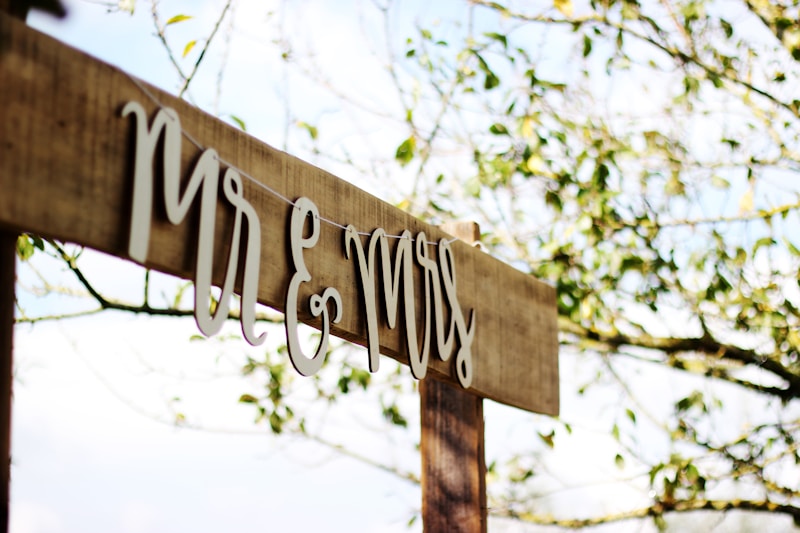Sizing for Wedding Dresses: A Comprehensive Guide to Finding Your Perfect Fit
Choosing the perfect wedding dress is one of the most exciting parts of planning your big day. However, if you don't get the sizing right, it could lead to a lot of stress and disappointment. In this guide, we will delve into the intricacies of sizing for wedding dresses, ensuring that you find the perfect fit that flatters your figure and complements your wedding theme.
Understanding Wedding Dress Sizes
Wedding dress sizes can often differ from regular clothing sizes, leading to confusion among brides. Most bridal shops use a unique sizing chart that can vary significantly from designer to designer. For instance, a size 6 in one designer might equate to a size 8 in another. Therefore, it's crucial to consult the specific sizing chart of the dress you are interested in.
The Importance of Accurate Measurements
When it comes to sizing for wedding dresses, accurate measurements are critical. Here are the key measurements you'll need:
- Bust: Measure around the fullest part of your bust while wearing a well-fitting bra.
- Waist: Measure around the smallest part of your waist, typically just above the belly button.
- Hips: Measure around the fullest part of your hips.
- Length: Measure from the top of your shoulder to your desired hemline (like the floor or the length of your train).
It’s recommended to have someone assist you with the measurements for greater accuracy. If possible, use a soft measuring tape and ensure it is snug but not too tight.
| Measurement | Where to Measure | Tips |
| Bust | Fullest part of the bust | Wear a supportive bra |
| Waist | Smallest part of the waist | Exhale when measuring for the best fit |
| Hips | Fullest part of the hips | Stand with your feet together |
| Length | Shoulder to hemline | Wear appropriate shoes during measurement |
Choosing the Right Style Based on Your Measurements
Understanding your measurements is only half the battle; choosing the right style that complements your body shape is equally important. Different dress silhouettes can accentuate various features. Here’s a breakdown of some popular styles:
- A-Line: Flattering for most body types, flowing from the waist down.
- Mermaid: Fitted to the body through the hips and flaring out at the knees, ideal for showcasing curves.
- Ball Gown: A dramatic skirt with a fitted bodice, perfect for those who want a fairy-tale look.
- Sheath: Follows the body closely and is great for slim figures.
Common Questions about Wedding Dress Sizing
When it comes to sizing for wedding dresses, brides often have multiple questions. Here are some of the most frequently asked:
1. Should I order a size up or down?
It’s generally advisable to order based on your largest measurement. Remember, wedding dresses can often be altered down, but it is difficult to let out the seams if the dress is too small.
2. How far in advance should I order my dress?
Most experts recommend ordering your wedding dress at least 6-8 months before your wedding day to account for fittings and alterations.
3. What if I'm between sizes?
If you find yourself between sizes, always choose the larger size. It's easier to take in a dress than it is to let it out.
Factors Influencing Sizing
Several factors can influence the fit of your wedding dress:
- Fabric: Different fabrics have different stretches and behaviors. For example, lace tends to be less forgiving than satin.
- Designer: Each designer has their unique sizing chart, meaning it’s crucial to check the specific sizing before ordering.
- Body Changes: Consider possible weight fluctuations (whether loss or gain) leading up to your wedding. It's usually best to order for your current size rather than your "goal" size.

Final Thoughts on Sizing for Wedding Dresses
Finding the right size for your wedding dress shouldn’t be a stressful experience. Taking accurate measurements and understanding the various dress styles will help make your shopping experience enjoyable. Remember to consult the sizing charts specific to the designers you're considering and be prepared for potential alterations to achieve that perfect fit. As you embark on this beautiful journey towards your wedding, take your time, seek advice when needed, and ensure that your choice reflects your personal style and comfort.
In conclusion, sizing for wedding dresses involves careful consideration of your measurements, the style of the dress, and the unique sizing charts of different designers. By planning ahead and keeping these tips in mind, you'll ensure that you look and feel your best on your special day. Happy dress shopping!